These Aliy Cams are a fun and interactive way I try to share my team’s experiences on the Iditarod Trail. In the 10 days, 7 hours, 28 minutes and 30 seconds that we traveled the trail I tried to capture the real images from the wilderness, the weather and the trail.
My dogs are the center of the videos. The race revolves around them. Their individual positioning in the team varies throughout the race. I moved them around depending upon their moods and energy. Their positioning also depended upon the trail and weather conditions or other random influences. The dogs on the team are: Amber, Bruno, Chevie, Cloud, Dutch, Decaf, Five, Jefe, Junior, Kodiak, QT, Rodney, Spark, and Violet. If you watch closely, you’ll get to know their gaits or their ear “bobs” or their little quirks.
We were at Old Woman Cabin in Episode 11. From there the trail travels southeast toward Unalakleet. On the way, the route crosses many tundra fields, marshes and finally jumps down onto the frozen Unalakleet River. As we travel on that river for several miles, we pass a few cabins, some are quite large. Then in the final mile, the trail veers off the river and summits a small hill. The top of this hill overlooks the mouth of the river and the village of Unalakleet. The mouth of the river forms a large lagoon that runs along the eastern edge of the town.
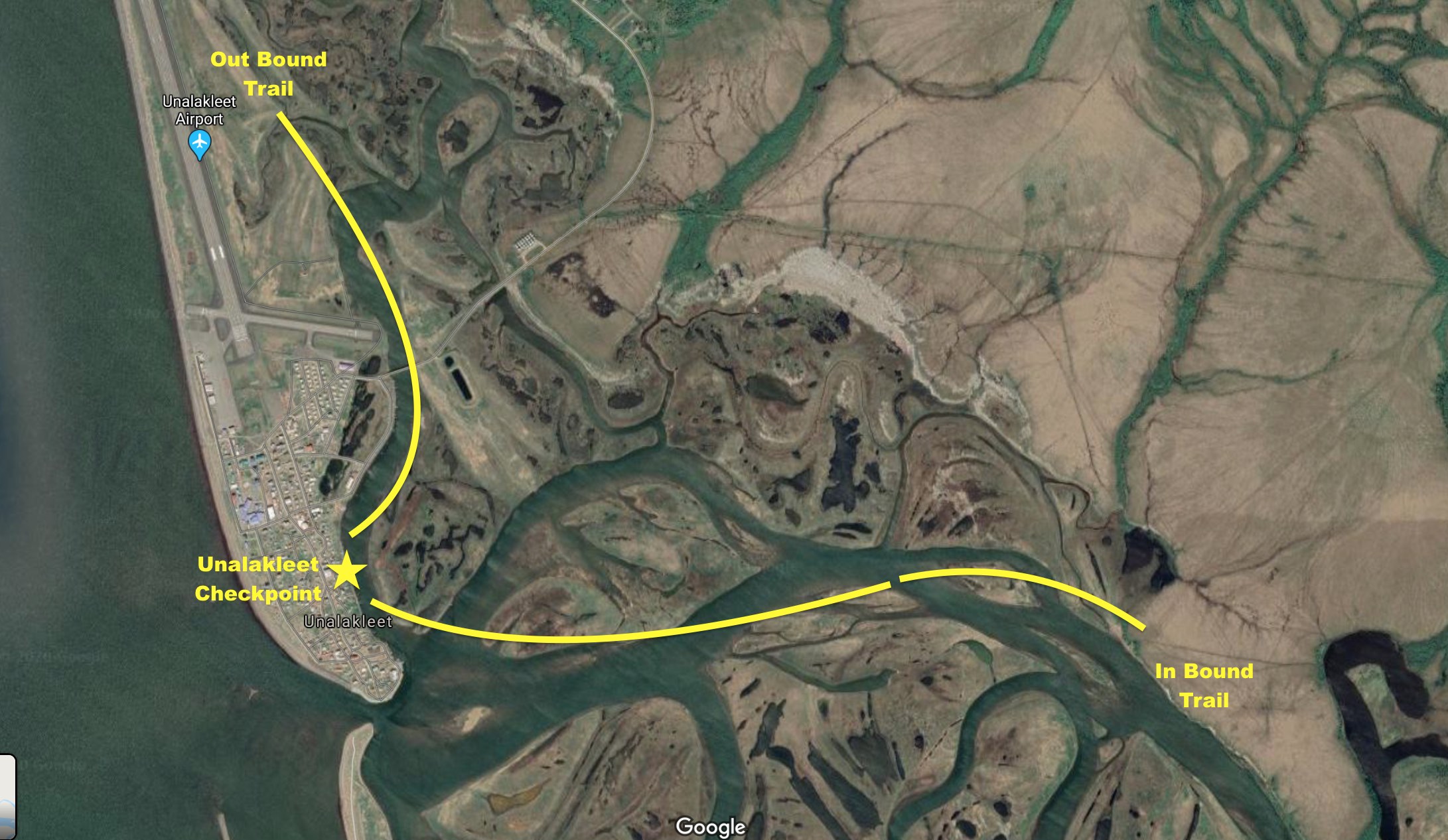
The city lights are a sudden and brilliant sight from the top of that little hill. The last hustle and bustle of human activity that we saw was Kaltag – many miles before. So, needless to say, the dogs get quite excited upon seeing those bright lights. My dogs love people and they associate lights to villages to people. Yay… all fun things.
When we descend this hill and follow the lagoon toward these lights, the team is extremely excited. There is often very little snow cover on the lagoon so it is slippery and the glare ice gives us very little traction. On our final mile to the checkpoint, we slip and slide and gallop uncontrollably… all the way to our parking spot. I have arrived in Unalakleet many times with a white-knuckle grasp on my handlebar as my leaders zig and zag on the ice and my sled is tossed this way and that.
Unlike some of the smaller checkpoint villages, where the Iditarod trail goes right down Main Street, the trail here, steers clear of the town center. Unalakleet is the biggest town on the race route between Wasilla and Nome, with about 800 people. It is a booming community with a lot going on besides an international dog mushing event. While town folk certainly are supportive of the race, they also have many other town commitments: a large hub airport, an impressive K – 12 school, several stores and even a restaurant. For that reason, I sometimes feel like Unalakleet is a difficult checkpoint to understand for dogs. They are really just passing thru this busy hub.
When the dogs first see the town lights, they are convinced that they will soon be trotting right down Main Street and be greeted like they have been – the center of everything – for the last 700 miles. That never happens. The dogs arrive at the Checkpoint which lays just to the east of the city. Then they eat and rest there and never really “arrive” in town.
When dogs are asked to depart this Checkpoint, I think they feel like they missed a turn somewhere because the exit trail does not go left into town, it actually veers right, and directly away from those city lights and noises. I have witnessed dog teams struggle to leave the Checkpoint here. Not because they don’t want to go… they just want to go to the west and see where all the hubbub is. I think as a musher, you have to be very aware of what is going on in your dogs’ minds at this point.
For this reason, before I depart, I like to take my time and get my team collected and focused on me – not on the mysterious town sights and sounds. I like to put a single leader in front of the team so that he or she will be my “Point Dog”. This year, it was Dutch. Together, the two of us will direct the team: one from the back and one from the front.
About 5 minutes before we departed, Dutch and I walked away from the team and out onto the exit trail. We walked a ways and checked it out. We saw where the slippery ice was, saw where holes and overflow were and basically understood the lay of the land. The rest of the dogs stood up and watched us with intent. When we walked back toward them, I could tell that they also knew exactly which direction we were set to go. Then I decided to harness my team in a traditional manner. This means that I used both tuglines and necklines. With every dog attached to the mainline at both the harness pulling point by the tugline and at the collar by the neckline, the dogs have no option but to follow in the steps of the dogs in front of them. This keeps the team very straight and organized. I don’t often use this system because I feel that it limits their individual gaits but I used it here because I wanted them to be focused as one team not as individuals.
The line up in this video is: Dutch in single lead, then Q.T. and Junior, then Cloud and Decaf, then Rodney and Five, then Jefe and Chevie, the Spark by himself and in the rear are Amber and Violet. I had Chevie thoroughly examined while we rested and she was “good to go”. Her shoulder cramp seemed to have worked itself out and you can see her in this video bopping down the trail next to her brother.
NOTE: I say that we are headed SOUTH as we depart the checkpoint. This is wrong. When leaving Unalakleet the trail heads NORTH. Opps.
Here is more of a thorough explanation of Harness Systems. Please note that there are many modifications that individual mushers have come up with besides just these two basic systems.
Traditionally sled dogs have been attached to the “main line” from the sled by two leashes (or lines). These lines attach to both the dog’s neck collar and the dog’s harness. Traditional harnesses run the entire length of the dog and the “tug” line attaches to the rear of the harness – near the dog’s tail. The neck line is used to keep the dog from veering too far off the trail.
Traditionally the neck line is shorter in length (12 to 20 inches) and the harness tug line is longer (30 to 60 inches). In this system, dogs have no option but to stand in the team, face forward and follow their leader.
Our system is different. Every dog is attached to the “main line” from the sled by only one leash (or line). Our harnesses are half the length of traditional harnesses and the line attaches at the middle of the dog. These lines are shorter in length (15 inches) and are used as both a “tug” line and to keep the dog from veering too far off the trail. These lines are shorter than some musher’s neck lines.
In our system dogs have the freedom to stand, sit, face forward or backward. We acknowledge that this system requires more training time of individual dogs. However, we believe that this added time and effort is ultimately worthwhile. In our system we can (and do) use neck lines if situations warrant.
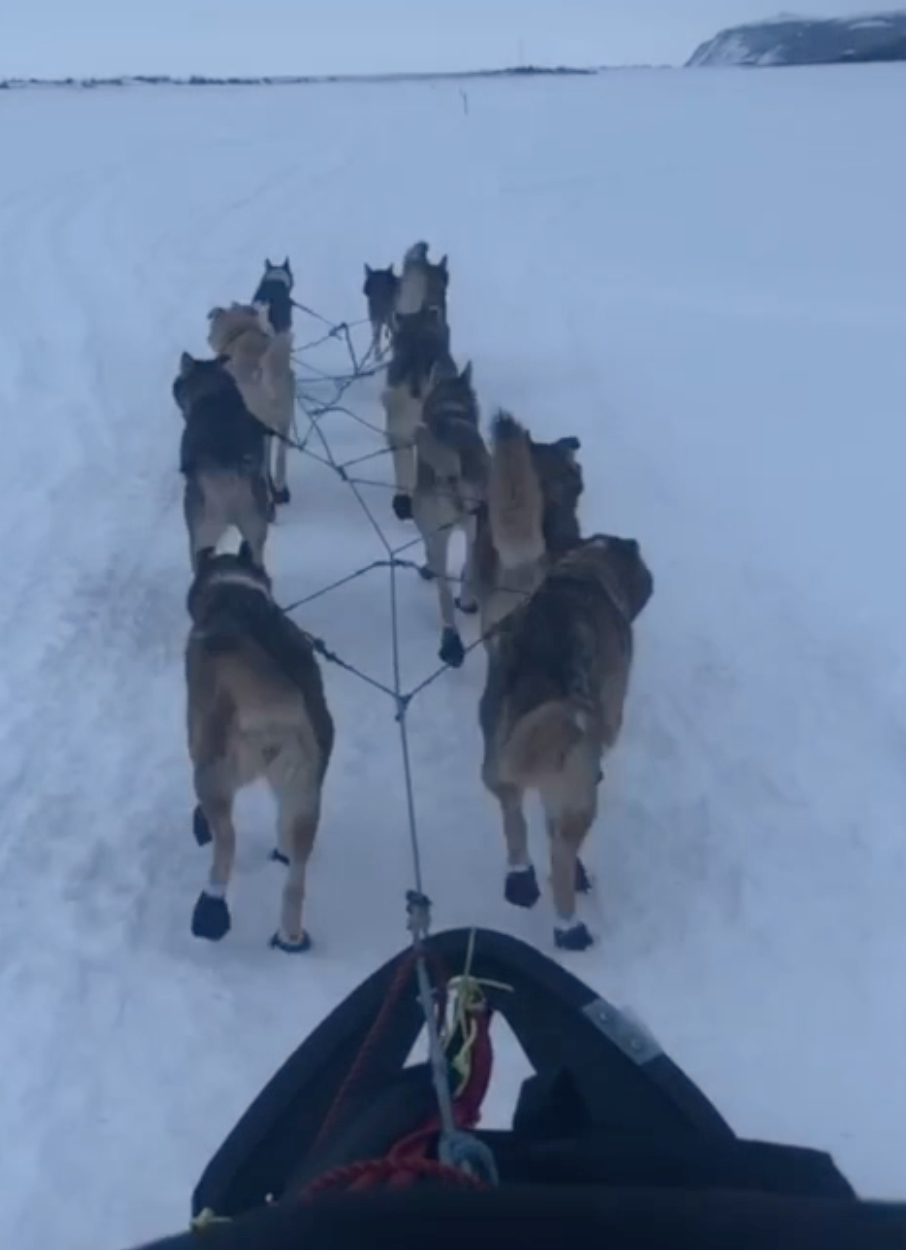
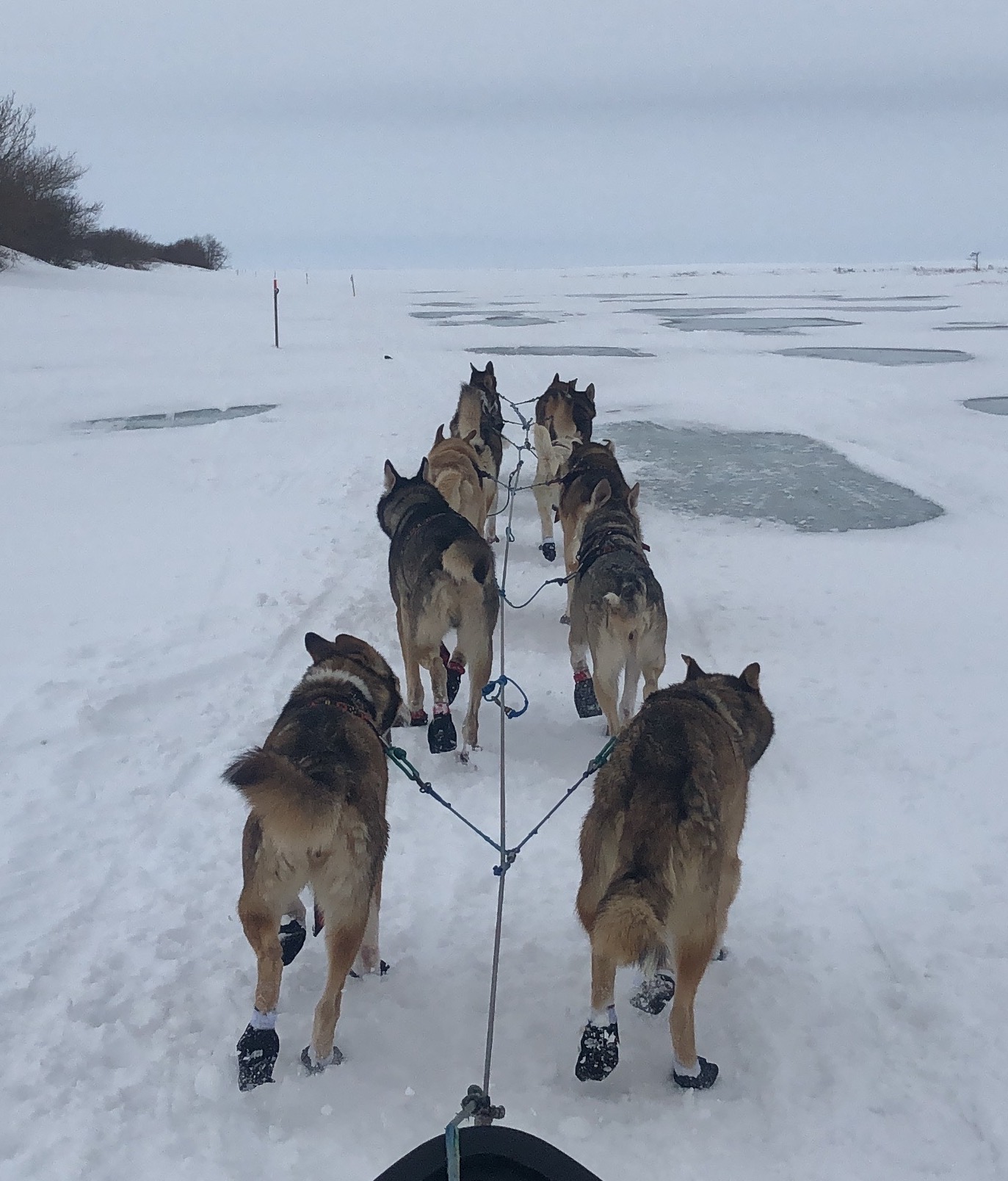
The race took my dogs and I over 10 days to complete. In total, I recorded only one hour of video. So these Aliy Cams are only a tiny segment of that experience. I also did not video during the most challenging trail or the worst blizzard conditions. I was too busy clinging my handlebars or navigating hazards. I also never recorded a video when I felt like it would intrude in our personal space.
Here is a map so that you can follow along.
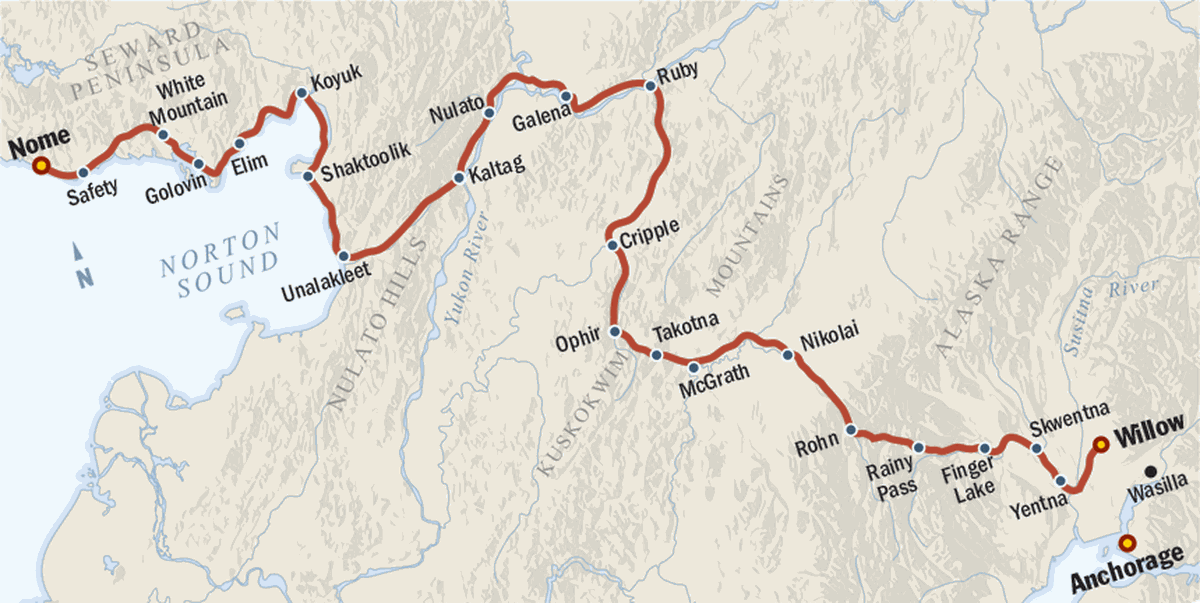

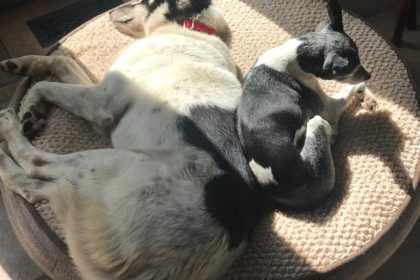


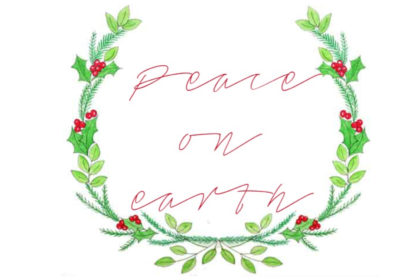
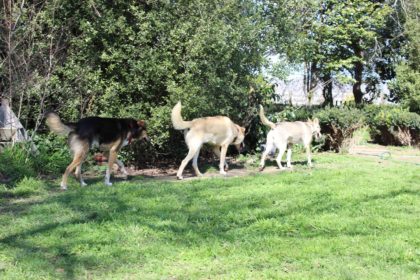
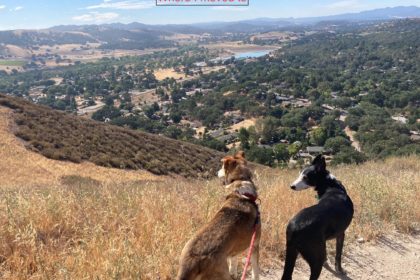
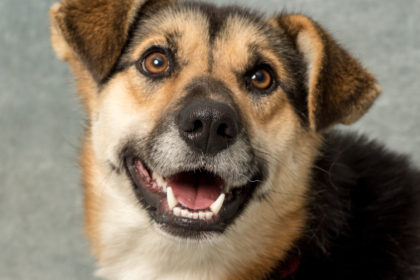
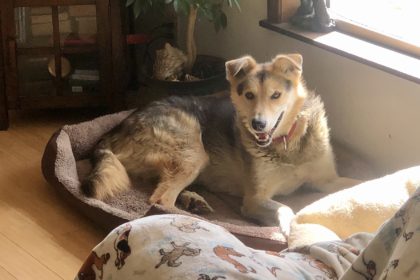
I agree…..the view looks messy with the neck lines….I always feel (from a visual standpoint) those systems with a mini spreader bar behind the dog looks super messy and complicated! To each their own I suppose…but I like simplicity! I’ll assume the Blueberry Hills are full of blueberries about now here in the end of July! Good boy Dutch getting the Team outta Unk!
Using just tuglines definitely looks simpler than both neck and tuglines. I love that you and Dutch walked the exit trail a ways before the whole team exited the checkpoint. There are many things mushers have to take into consideration that we don’t see while watching the tracker…things I would not think of while watching the race from my computer. So cool that all the dogs stood watching you and Dutch and were ready to go. I also love that the dogs enjoy people and checkpoint/village activity. Thanks for these videos.